The Method That Moves You Better: Inside Pilates
Pilates has been around for over a century, and there’s a reason it stood the test of time. What started as a rehab method has turned into something far more flexible — a way to build strength, improve how you move and just feel more at home in your body. It’s all about control, alignment, breath and stability, things that carry over into everything from daily tasks to more demanding training.
You’ll see in all sorts of settings, from home workouts and fitness studios to physio clinics and sports rehab. Pilates adapts easily, which is a big reason it’s stuck around so long.
This guide covers where Pilates came from, how it works, what it actually does, and the tools and types you might come across along the way.
What Is Pilates, Really?
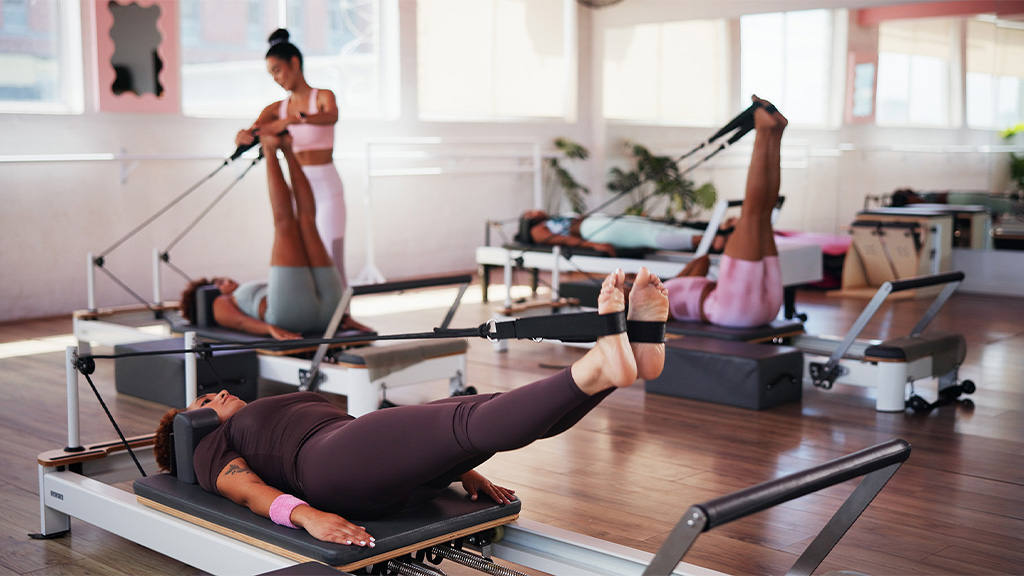
Pilates is a method of low-impact exercise that helps improve strength, control, flexibility, and body awareness. It focuses heavily on the core: not just your abs, but also the deep muscles around your spine, pelvis and hips, which help stabilise the entire body.
The movements are slow, precise and controlled. Instead of powering through reps or chasing sweat, Pilates is about how you move. The aim is to build strength that supports your joints and posture, not just bulk or speed.
Pilates ranges from gentle to demanding, depending on how it’s taught, but the focus on control and purpose stays the same. It teaches you to move with more purpose and to notice the patterns and habits your body falls into without you realising.
Where Did Pilates Come From?
Pilates was developed by a German-born man named Joseph Pilates in the early 20th century. He was interested in anatomy, movement and physical conditioning from a young age, especially after dealing with health issues as a child. He drew on a mix of influences, including gymnastics, martial arts, yoga and even animal movement, to build a method that strengthened the body from the inside out.
During World War I, while interned in a camp in the UK, he began developing his approach by helping other detainees stay fit and recover from injury. He rigged up springs and pulleys to hospital beds so patients could exercise without putting weight on injured limbs. That rigged-up hospital bed setup laid the groundwork for what we now call the Pilates reformer.
Later, he moved to New York and opened a studio with his wife, Clara. The method caught on with dancers and performers, who were drawn to its focus on alignment, control and injury prevention. Over time, Pilates grew beyond that world and spread into physio, fitness, rehab and sport.
Although the method has evolved, the core principles have stayed the same: controlled movement, quality over quantity and a deep connection between mind and body.
What Are the Real Benefits of Pilates?
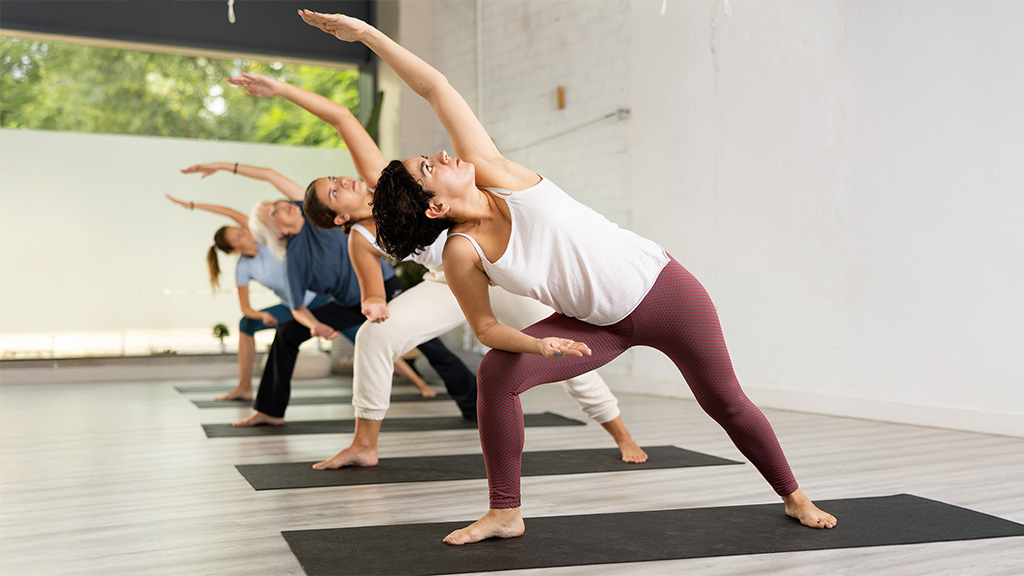
At its core, Pilates is about how you move. It trains the body to move more efficiently, with better alignment, balance and control. That might sound basic, but when you’ve spent years dealing with tight hips, a stiff back or a shoulder that never quite settles, those small changes can make a big difference.
Pilates targets specific muscle groups through whole-body movement. It uses gravity, breath and (in some cases) spring-based resistance to help retrain the body’s movement patterns. Instead of working muscles in isolation, Pilates teaches them to work together. This helps reduce tension, improve coordination and support joints more effectively.
It’s often used to correct poor posture and uneven muscle use, the kind that builds up from years of sitting, injury, stress or just daily habits. With consistent practice, people often notice improved strength, flexibility and a stronger connection to how their body actually works.
Benefits can include:
- Better posture and alignment
- Improved mobility and joint support
- More body awareness and control
- Support during injury recovery or rehab
- Help with managing conditions like back pain, hypermobility or neurological issues
- Greater movement confidence, especially after illness or surgery
- A sense of ease in everyday activities
Pilates doesn’t promise instant transformation or flashy results. But it can help people feel more at home in their bodies, and that alone can change how they move through the rest of life.
You might like this too: Indoor Rowing Training: Quiet Machine, Loud Results
“Above all, learn how to breathe correctly.” The Principles of Pilates
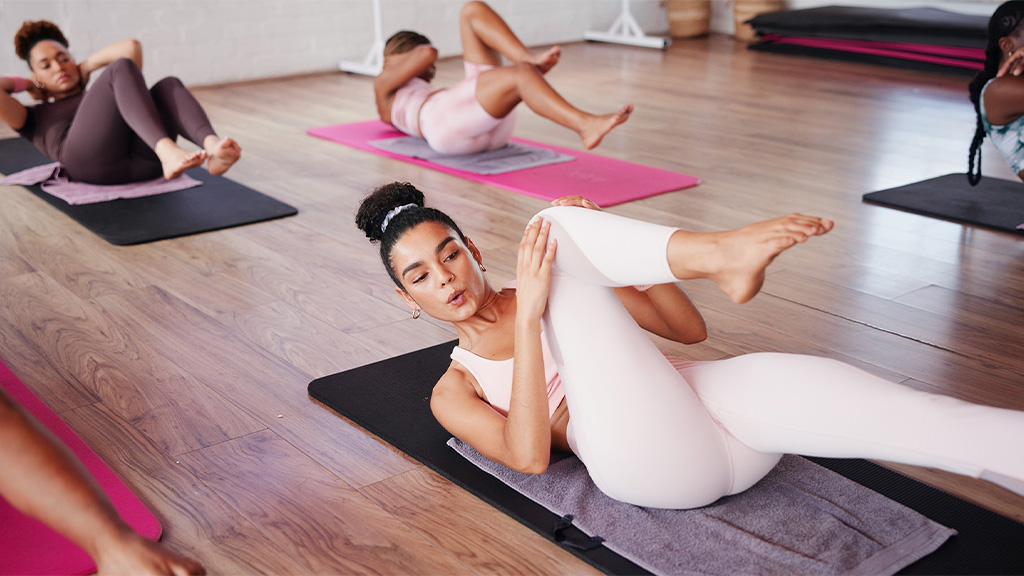
Joseph Pilates believed that good movement doesn’t just come from strong muscles; it comes from awareness, focus and intention. While his original approach was built on broad ideas like breath, whole-body health and commitment, the method has since been shaped around six core principles. These are what give Pilates its structure and depth.
Breath: Breathing is central to Pilates. It helps guide movement, support the spine, and keep the mind focused. Breath drives most Pilates exercises and helps release tension while setting the rhythm.
Concentration: Pilates asks you to pay attention, not just go through the motions. Every movement is done with focus, which helps retrain the body and avoid old habits.
Centring: Often called “the powerhouse”, this is the idea that strength starts from the centre of the body. It begins in the deep muscles around the core, spine and pelvis, and radiates outwards.
Control: Movements in Pilates are deliberate and controlled. Rather than rushing through reps, the aim is to move with accuracy, using just the right amount of effort.
Precision: Every movement has a purpose. Small adjustments matter, and doing something well once is valued more than repeating it quickly or carelessly.
Flow: Each exercise flows smoothly into the next to keep movement connected. This doesn’t mean fast or forced, but connected, encouraging grace, rhythm and efficiency.
These principles are the foundation of the method. These principles guide how instructors teach and practise Pilates across all styles, from classical matwork to contemporary sessions.
Types of Pilates: Which One’s For You?
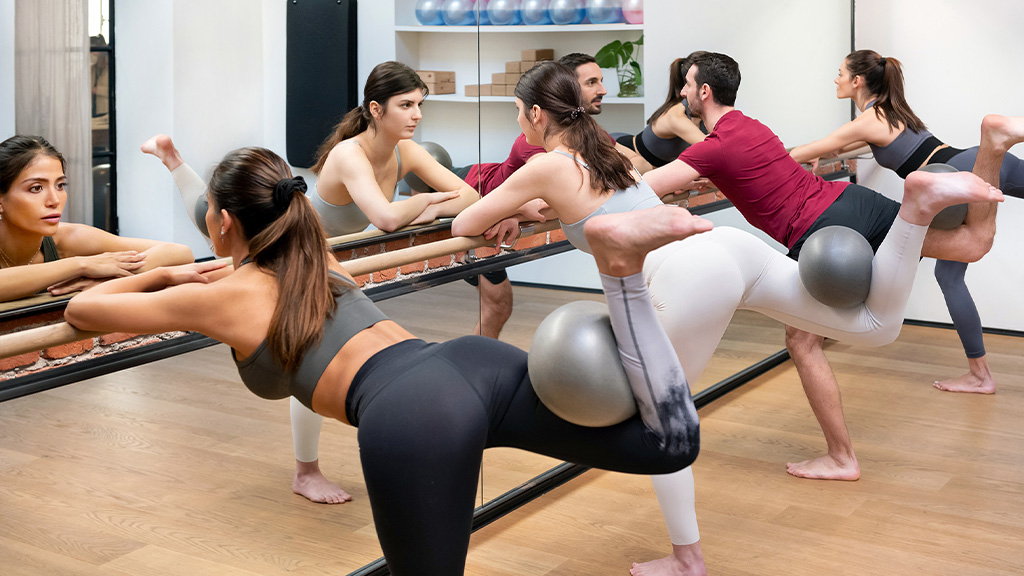
Pilates comes in all sorts of styles. Some stick to the original method, some mix things up with modern science or other movement practices. Here’s a quick guide to what’s what.
Classical vs Contemporary Pilates
Classical Pilates sticks closely to Joseph Pilates’ original method. The exercises, order and equipment setup follow his original sequences, with minimal changes. It’s often quite structured and precise, focusing on the traditional flow and control he emphasised.
Contemporary Pilates takes the core ideas of Pilates and adapts them using modern understanding of biomechanics, rehabilitation and movement science. It might incorporate small props, changes in sequence, or influences from physiotherapy. You’ll often find this style in gyms, studios and clinics.
Mat Pilates vs Reformer Pilates
Mat Pilates is done on the floor using a mat and, occasionally, small props like rings, bands or blocks. It focuses on using body weight for resistance and is usually more accessible for beginners or home practice. That said, it can still be a serious challenge, depending on how it’s taught.
Reformer Pilates uses a machine with springs, straps and a moving carriage to add resistance and support while still challenging the body. It’s a go-to in physio clinics and movement studios, especially useful for targeting specific muscle groups, controlling movement range and working on alignment. The equipment allows for precise adjustments, which can be especially helpful during rehab or recovery.
Other Pilates Styles and Hybrids
Chair Pilates: Often used in clinical or modified programmes, this method involves seated or supported exercises that reduce pressure on joints. It’s popular among older adults, people in rehab or anyone easing into movement after injury or surgery.
Barre Pilates: A fusion of Pilates, ballet and strength training. It typically focuses on posture, balance and smaller, targeted movements, often done at a ballet-style barre. Expect controlled pulses and plenty of lower-body work.
Stott Pilates: A contemporary approach developed with input from physiotherapists. Stott Pilates adjusts the original method based on modern spinal health research, placing more emphasis on neutral spine alignment and functional movement. It’s widely used in rehab and training settings.
Other hybrids: You might also come across blended approaches like Yogalates, Power Pilates, or even HIIT-Pilates. These vary by instructor and studio, combining Pilates principles with other fitness methods.
The style you go for depends on what you need and how you like to move. Still wondering how Pilates compares to yoga? Let’s clear that up next.
Also worth a read: Four Minutes to Fitness: Why Tabata is the Ultimate Workout
Pilates vs Yoga: What’s the Difference?

Pilates and yoga often get grouped together, and it’s easy to see why. They’re both low-impact, focus on controlled movement and breathing, and can help with strength, flexibility and stress. But the methods, goals and feel of each practice are actually quite different.
Approach to Movement
Pilates focuses on controlled, repetitive movement patterns, often flowing from one to the next. The aim is to strengthen and stabilise, especially through the core.
Yoga combines static holds and flowing sequences, but the pace can vary a lot. Some classes are slow and restorative, while others are dynamic and physically demanding.
Core Principles
Pilates is all about how you move. It focuses on posture, alignment and using your muscles in a way that supports your whole body. It started out as a rehab method, so it’s naturally quite structured, but not in a stiff, boring way. The aim is to build strength that’s useful, steady and easy to carry into daily life.
Yoga, on the other hand, is a bit more varied. Some styles come with chanting and philosophy, others just focus on the stretch and strength side of things. But at its core, it’s about connecting movement and breath, and being a bit more present, on the mat, and maybe off it too.
Breathing Styles
In Pilates, breathing is used to support movement and core control. You’ll usually breathe in through the nose, out through the mouth, and direct the breath into the sides of the ribcage. This helps keep the deep abdominal muscles engaged while everything else moves around them.
In yoga, breath is a central practice in its own right. Known as pranayama, it includes different techniques for calming, focusing or energising the body and mind. Some styles pair it closely with movement, others use it on its own as a tool for meditation or stillness.
Physical Benefits
Pilates helps you build strength where it counts, especially through the core, back and hips. It supports good posture, steadier balance and more controlled movement. It’s often used in rehab for a reason: it teaches your body to work better, not just harder.
Yoga is great for flexibility and releasing tension, but there’s more to it than stretching. It builds strength too, just in a different way: holding poses, staying balanced, moving with focus. And while your body’s doing all that, your mind gets a bit of space to breathe as well.
Use of Equipment
You can practise Pilates on a mat, or switch things up with gear like resistance bands, rings, balls, or a reformer. The gear adds variety and helps target muscles in a more focused way.
Yoga tends to keep things simple. Most classes just use a mat, and maybe a block or strap to support certain postures. The focus is on moving your own body, without adding resistance or machines. Up next, we’ll take a closer look at the best Pilates app to start with or upgrade your practice.
Top Pilates Apps
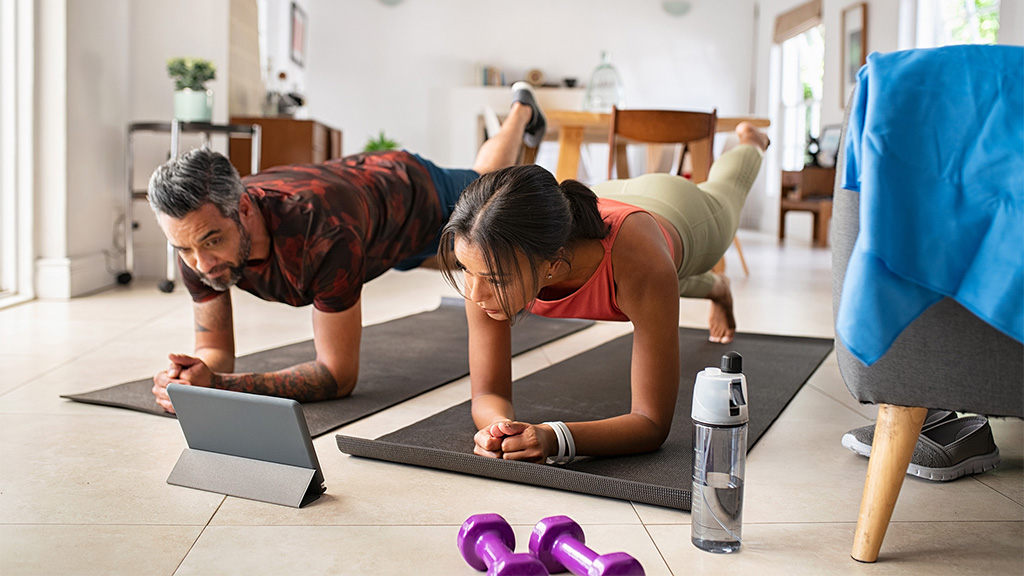
There’s plenty to choose from, each with its own vibe and focus, from tough, sweat-inducing workouts to gentle, mindful sessions. Here’s a snapshot of some popular options.
The Pilates Class: Structured, high-quality sessions that feel close to what you’d get in a studio. Good if you want something focused and physically challenging.
Pilates Anytime: Known for a huge library of classes and challenges, with something for every level, including beginners finding their feet.
Glo: More than just Pilates, this app includes yoga and meditation too, great if you want a broader approach to wellness.
Pilatesology: Focused on classical Pilates. Offers detailed, method-based teaching for people who want to understand the original approach.
FitOn: Free access to a wide range of Pilates classes, with the option to try sessions led by high-profile instructors. A flexible choice if you want to dip in and out.
Lottie Murphy Pilates: Gentle and steady routines with a strong focus on control, breath and balance. Suits those who prefer a slower pace.
Align by Bailey Brown: Short, low-impact sessions combining Pilates with mindful movement. Easy to follow and consistent, with an emphasis on flow and rhythm.
Body by Blogilates: A popular choice if weight loss is on your mind, a mix of Pilates and general fitness
B the Method by Lia Bartha: Equipment-free, form-focused Pilates designed for home use. Sessions centre on deep control and long-term progress.
Try a few, mix and match, or stick with one that feels like a good fit. Next up, we’ll cover Pilates essentials that can help bring more variety and support to your practice.
Check out: Epic Rides Start Here: The Best Indoor Cycling Apps for 2025
Pilates Essentials
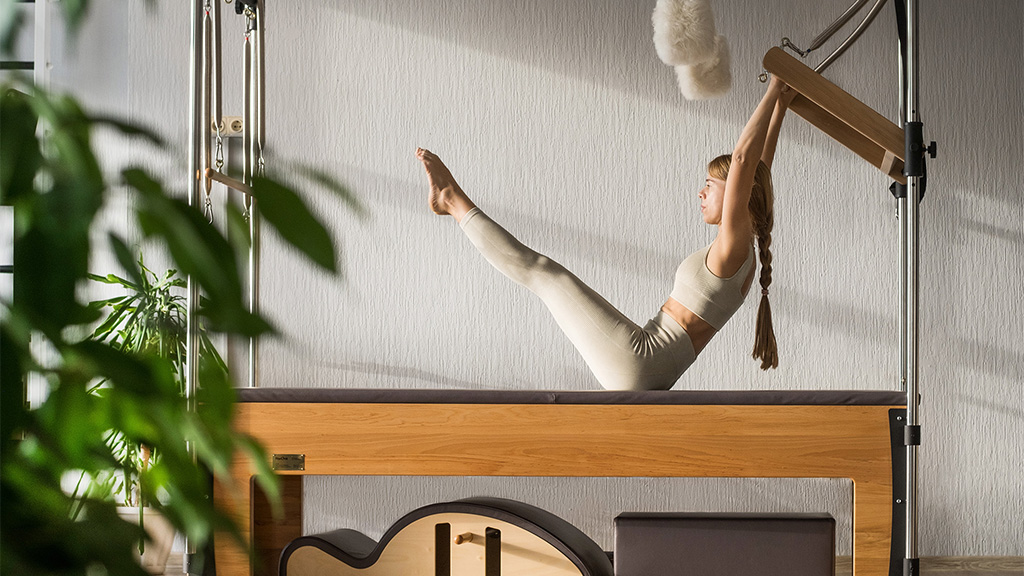
To start Pilates, you just need a mat and a bit of space. A mat and some space to move are enough to try the basics and see how it feels. From there, you can add equipment that brings variety, support or resistance depending on how you like to train.
Mat: The base of most Pilates work. You use your own body weight and move through controlled exercises on the floor. Great for home practice and learning the method.
Reformer: A sliding platform with springs and straps. It adds resistance and support, which helps with precision, range and alignment. Common in studios and physio settings.
Cadillac (or trapeze table): A larger piece of equipment with bars, springs and loops. Often used for assisted stretches, rehab or more advanced strength work. Mostly found in professional studios.
Chair: Compact and spring-loaded with pedals for resistance. Useful for targeting strength and balance in smaller movements. Popular in clinical settings or with older adults.
Props and small equipment: These bits aren’t essential, but they can support your practice or add challenge when needed. Things like resistance bands and Pilates rings introduce light tension to help engage specific muscles. Grippy socks give you more stability during standing work. Sliders create smooth movement on the floor, especially during core or leg exercises. You often use bolsters and cushions in slower or restorative sessions, while straps can help with flexibility, especially when you’re building range in certain positions.
You don’t need everything at once. Start simple and add what feels useful as your practice develops.
How to Get Started With Pilates Today
Pilates has been around for over a hundred years, but its goal hasn’t changed: to help people move better, feel stronger and stay connected to how their body works. From simple mat routines to full studio setups, there’s plenty of room to shape it around your life.
At Fitshop, we help people set up for Pilates every day. You can shop online, visit one of our stores or get in touch with our commercial team if you’d like some help choosing the right kit for your facility.

Post Comment